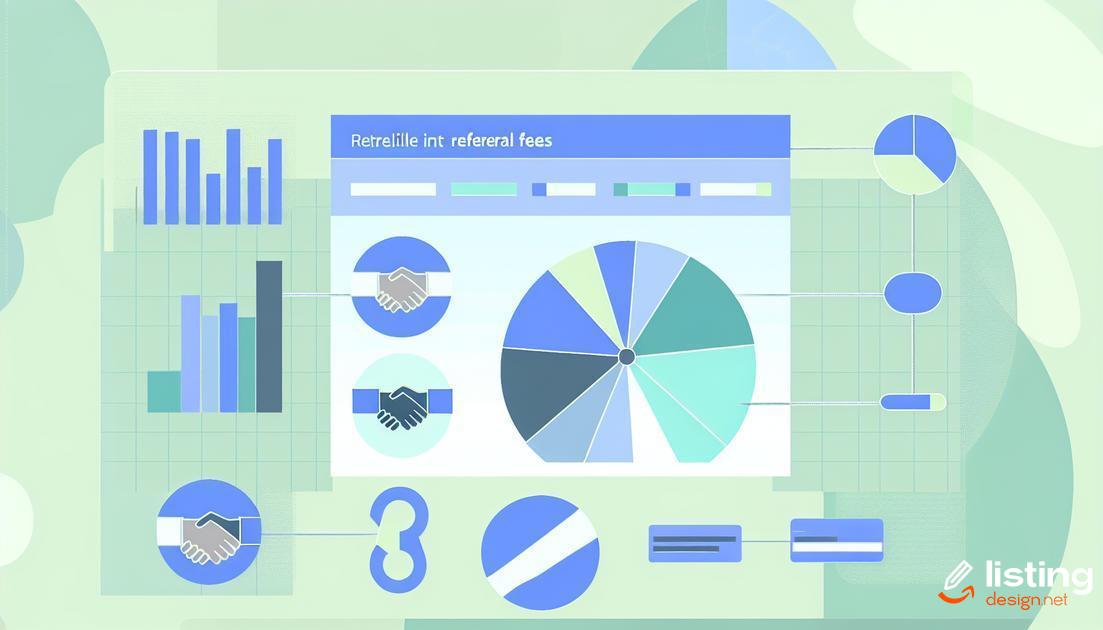Selling on Amazon offers vast opportunities, but understanding the fees associated with Amazon selling is crucial for maximizing your profits. From referral fees to storage costs, these charges can significantly impact your bottom line. This guide will help you break down each fee type and offer strategies for managing these expenses effectively. By being aware of these costs, you can make informed decisions and optimize your selling strategy on Amazon.
Table of Contents
Understanding Amazon Seller Fees
Amazon Seller Fees Overview
To successfully sell on Amazon, it’s crucial to understand the various fees involved. These fees can significantly affect your profit margins, so knowing them in detail is essential.
Referral Fees
Amazon charges a referral fee on each item that’s sold. The fee is a percentage of the total sales price, which includes item price, shipping cost, and any gift-wrapping charges.
Fulfillment Fees
If you use Fulfillment by Amazon (FBA), you’ll incur additional fees for storage and shipping. These fees are based on the size and weight of your items.
Closing Fees
For media products, Amazon charges a closing fee. This is a flat fee applied to each sale of media items, such as books, DVDs, and music.
Storage Fees
Monthly storage fees apply to all inventory stored in Amazon’s fulfillment centers. There are also long-term storage fees if your items remain in Amazon’s warehouses for an extended period.
Subscription Fees
Amazon sellers have the option to subscribe to a professional selling plan, which includes a monthly subscription fee, allowing the sale of more items and access to additional tools.
Advertising Costs
Advertising on Amazon can help increase your sales, but it’s important to factor in the costs of doing so. Your budget and the competitive landscape will influence how much you spend.
Refund Administration Fees
If a customer returns an item, Amazon deducts a refund administration fee from your seller account. This fee is usually on a per-item basis.
High-volume Listing Fees
For sellers with a high volume of listings, Amazon may charge additional fees. These are typically applied to sellers listing more than a certain number of items.
Export Fees
Selling internationally involves export fees. These fees vary based on the destination country and are in addition to the regular selling fees.
Hidden Fees
There are several hidden fees that can catch new sellers off guard. These include costs like unexpected shipping charges and additional handling fees. Being aware of these can help you avoid them.
Managing Amazon Selling Fees
To maintain profitability, it’s important to develop strategies to manage these various fees. Regularly reviewing your pricing strategy and utilizing cost-saving measures can make a significant difference.
Referral Fees Breakdown
Referral fees on Amazon are charged on each item you sell. These fees vary based on the category of the product. For most categories, the referral fee ranges between 6% and 45%. However, popular categories like electronics, apparel, and books tend to have standardized rates that sellers should familiarize themselves with.
Example Fees by Category:
- Electronics: 8%
- Apparel: 17%
- Books: 15%
- Home and Kitchen: 15%
- Health and Personal Care: 15%
Minimum Referral Fee: Apart from the percentage-based fee, there’s a minimum referral fee for certain categories. This means that if the calculated referral fee is below a certain threshold, Amazon will charge the minimum fee instead.
- For example, Jewelry items carry a minimum referral fee of $2.00.
It’s essential to keep these fees in mind when pricing your products to ensure profitability. Having a clear understanding of how referral fees are structured across different product categories will help you maintain competitive pricing while covering costs.
Fulfillment by Amazon (FBA) Fees
When using FBA, you will incur several fees that are associated with storage, handling, and shipping of your products. These fees are designed to cover the costs Amazon incurs while providing these services.
Fulfillment Fees: This fee is charged per unit and varies based on the size and weight of your product. It includes picking, packing, shipping, and handling expenses.
Monthly Storage Fees: Amazon charges a monthly fee for storing your products in their warehouses. This fee is calculated per cubic foot and varies depending on the time of year, usually being higher during October to December.
Long-term Storage Fees: Items stored in Amazon fulfillment centers for more than 365 days will incur additional long-term storage fees. This encourages sellers to keep inventory moving and prevents clogging up the warehouse.
Removal and Disposal Fees: If you decide to remove inventory from Amazon’s warehouse, or if you need Amazon to dispose of unsellable items, you will be charged a fee for each item.
Return Processing Fees: For product categories where Amazon offers free returns to customers, you will be charged a return processing fee, which covers the costs associated with returns management including handling and shipping back to the warehouse.
Closing Fees Explained
When selling on Amazon, closing fees are transaction-based fees that apply each time an item is sold. These fees can vary depending on the category of the product and the type of sale.
For media products, such as books, music, video, and DVD, Amazon imposes a fixed closing fee. This fee is in addition to referral fees and other selling costs.
Additionally, for other non-media items, Amazon includes variable closing fees based on item weight and dimensions. Sellers should carefully calculate these costs to determine the profitability of each sale.
Understanding the breakdown of these closing fees is essential for effective pricing and inventory management. Regularly reviewing these charges ensures sellers remain profitable while maintaining competitive pricing on the platform.
Storage Fees: Monthly and Long-term
Monthly Storage Fees: Amazon charges monthly storage fees for inventory stored in their fulfillment centers. These fees are based on the volume of the products in cubic feet and are typically calculated from the daily average volume in a given month. Charges differ depending on the time of year, with higher rates during the October-December period due to increased holiday season storage demand.
For instance, standard-size items stored from January to September incur a monthly fee of $0.75 per cubic foot, while oversized items attract a different rate. From October to December, the fee for standard-size items increases to $2.40 per cubic foot.
Long-term Storage Fees: In addition to monthly fees, Amazon imposes long-term storage fees for items held in fulfillment centers for over 365 days. This is to encourage quicker turnover of inventory. Long-term storage fees are assessed on the 15th of each month and the per-unit fee may vary. Typically, the cost is $6.90 per cubic foot or a $0.15 per unit, whichever is greater.
These fees underscore the importance of efficient inventory management and proactive sales strategies. Sellers are encouraged to monitor their inventory age and use Amazon’s Inventory Health Report to identify products at risk of incurring long-term storage fees.
Subscription Fees for Amazon Sellers
With Subscription Fees, Amazon offers two main selling plans: the Individual plan and the Professional plan. Each plan has its own set of fees and benefits, making it crucial to choose the right one for your business needs.
The Individual Plan is designed for casual sellers who plan to sell fewer than 40 items per month. This plan costs $0.99 per item sold but does not include access to advanced selling tools and reports.
On the other hand, the Professional Plan is ideal for businesses that expect to sell more than 40 items per month. The subscription fee for this plan is $39.99 per month, regardless of how many items are sold. This plan provides access to advanced selling tools, inventory management, and additional advertising solutions.
Choosing between the Individual Plan and the Professional Plan depends on your sales volume and business goals. For lower volume sellers, the per-item fee may be more cost-effective. However, for higher volume sellers, the Professional Plan’s monthly fee could offer significant benefits and cost savings in the long run.
Costs of Advertising on Amazon
Costs of Advertising on Amazon
Advertising on Amazon can be a crucial part of your selling strategy, but it’s important to understand the various costs involved. Amazon offers multiple advertising options, each with its own pricing structure.
Sponsored Products
Sponsored Products are cost-per-click (CPC) ads, meaning you pay each time a shopper clicks on your ad. You can set your own budget and bids, making it a flexible option for different budget sizes.
Sponsored Brands
Sponsored Brands feature your brand logo, a custom headline, and multiple products. These ads are also on a CPC model, allowing you to gain visibility for your brand across Amazon’s platform.
Sponsored Display
Sponsored Display ads target shoppers both on and off Amazon based on their shopping behavior. This can be especially effective for retargeting purposes. Pricing is typically on a CPC basis.
It’s essential to keep a close eye on your ad performance through Amazon’s advertising dashboard. Monitor your ad spend, adjust bids as necessary, and optimize your campaigns to ensure you’re getting the best return on investment.
Refund Administration Fees
The refund administration fee is charged when a refund is issued to the customer for an item. This fee helps cover the costs associated with processing refunds, including payment processing and handling returns.
When a customer returns an item and receives a refund, Amazon typically reimburses you the referral fee you initially paid, deducting a small portion as the refund administration fee. The standard rate for this fee is $5 or 20% of the referral fee, whichever is less.
The refund administration fee ensures that the costs Amazon incurs while processing refunds do not solely burden sellers. It is important for sellers to be aware of these fees and factor them into their pricing strategy to avoid surprises when processing customer returns.
Key Points to Remember:
- The fee is applied per refunded item.
- It is either $5 or 20% of the referral fee, whichever is lower.
- This fee helps cover operational costs linked to refunds.
- Being aware of this fee can help you better manage your Amazon selling costs.
High-volume Listing Fees
Amazon charges high-volume listing fees to sellers who are registering a significant number of products. These fees are typically applicable to sellers who have more than 100,000 active ASINs in their catalog. The fee is designed to offset the additional operational expenses incurred by Amazon for managing large inventories.
For every active product above the 100,000-ASIN threshold, Amazon charges a nominal fee. It’s essential to keep this in mind when planning your product listings. This fee can quickly add up, impacting your overall profit margins if not properly accounted for in your financial planning.
One way to manage these fees is through efficient inventory management. Regularly review and remove inactive or slow-moving products to keep your active listings within the limit. By doing so, you not only save on these fees but also streamline your inventory for better sales performance.
Additionally, consider leveraging Amazon’s bulk listing tools and software to manage high listing volumes more efficiently. This can help you keep your catalog organized and avoid unnecessary fees over time.
Export Fees for International Sales
When selling internationally through Amazon, there are several fees associated with exporting your products. These fees can impact your overall profit margins, making it crucial to understand and manage them effectively.
Customs Duties and Taxes: These are levied by the destination country and can vary significantly. It’s essential to research and understand these charges beforehand to avoid any surprises.
Shipping Costs: International shipping usually costs more than domestic shipping. The rate depends on the shipping destination, package size, and weight. Using Amazon’s partnered carriers can sometimes offer discounted rates.
Currency Conversion Fees: When selling in a foreign currency, Amazon will convert the earnings into your home currency. This conversion comes with a fee, which can affect your net income. It’s wise to keep an eye on the exchange rates and conversion fees associated with your transactions.
Import Fees Deposit: For certain items and destinations, Amazon may require an import fees deposit at the time of purchase. This deposit covers the potential costs of import duties and taxes.
Compliance Costs: Different countries have varying regulations and standards that your products must meet. Compliance with these regulations can incur additional costs, such as labeling, certification, and testing fees.
By staying informed about these potential costs, you can better plan and budget to maximize your international sales profitability on Amazon.
Hidden Fees to Watch Out For
While selling on Amazon has its perks, hidden fees can quickly add up and cut into your profit margins. Being aware of these fees ensures that you can plan accordingly and avoid unexpected expenses.
Account Maintenance Fees: Sometimes, sellers may incur fees related to the maintenance of their Amazon account, especially if certain criteria are not met. This could include fees for inactive listings or reinstating privileges after policy violations.
Unplanned Prep Services: If your products do not meet Amazon’s packaging and labeling requirements, Amazon might charge you for additional prep services. Ensure compliance to avoid these unexpected costs.
Additional Shipping Fees: When using Fulfillment by Amazon (FBA), be aware of potential additional shipping costs. Miscalculating dimensions or weights can lead to unexpected fees.
Return Fees: In case of customer returns, there can be administrative fees associated with processing the return as well. Depending on the category of the item, these fees can vary and should be taken into account.
Long-term Storage Fees: If your inventory sits in Amazon’s warehouse for longer than 365 days, you may incur additional long-term storage fees. These can be substantial, so it’s pivotal to manage your stock levels efficiently.
Overage Fees: If your storage space requirements exceed your allocated amount, Amazon may charge you overage fees. Monitoring your storage and staying within limits can help prevent these extra costs.
By understanding and preparing for these hidden fees, sellers can better manage their finances and maintain healthy profit margins while operating on Amazon.
Strategies to Manage Amazon Selling Fees
To effectively manage Amazon selling fees, sellers need to regularly analyze and adjust their strategies. One key strategy is to maintain a healthy profit margin by periodically reviewing the cost structure and adjusting prices accordingly. Using tools like Amazon’s built-in reports can help sellers identify cost-saving opportunities.
Another approach is to optimize product listings to enhance visibility and increase sales. This can involve keyword optimization, ensuring high-quality images, and providing detailed descriptions to attract potential buyers. Additionally, enrolling in the Fulfillment by Amazon (FBA) program can streamline logistics, though it is crucial to weigh the benefits against the associated fees.
Sellers should also consider negotiating better terms with suppliers or exploring alternative sourcing methods to reduce the cost of goods sold. Monitoring and managing storage fees by balancing inventory levels to avoid long-term storage penalties is also essential.
Leveraging Amazon’s advertising options effectively can improve product visibility without excessive spend. Using targeted ads and regularly assessing their performance can help optimize advertising budgets.
Finally, keeping up with frequent updates on Amazon’s fee structures and policies allows sellers to adjust strategies proactively, ensuring they remain competitive while managing costs effectively.








